Founding Diabete-ezy
FOUNDING DIABETE-EZY
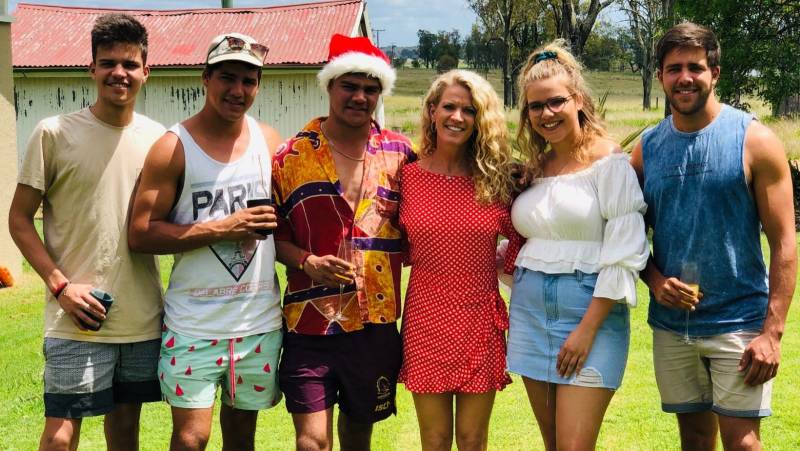
ELISSA BISHOP’S STORY
Thank you for visiting our website. I would like to share with you my story, and the challenges I face every day in the hope it may bring you a better understanding of diabetes, explain the help and support you can seek and, above all, make the management of your life with Diabetes, whether it be yours or a loved one’s, that little bit easier.
On the surface, we are a typical Australian family with five happy, healthy and well-loved children. Delving further, you will realise that our lives are a little more complicated than others. However, we have never lost our determination to live as normally as possible – even though we must constantly deal with the on-going health issues that continue to be handed to us.
It is out of this determination that Diabete-ezy was born in 2004. In helping my sons manage their health, I saw a great need for convenient, user friendly products to assist people to better manage diabetes. So I decided to take matters into my own hands, thus bringing the business to life.
.
ABOUT ME
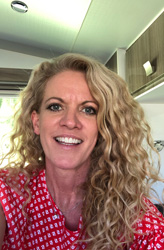
I grew up on a 620-hectare farm about 10 minutes outside the small town of Murgon which is about 240km north west of Brisbane, Queensland, Australia . I left high school in Year 11 to start a hairdressing apprenticeship. In 1988, I transferred my apprenticeship to a Brisbane salon, got married at 19 and lived in the city suburbs for the next seven years. My enduring love for the country and animals led my family to purchase a 16 hectare property in Samford, about 30 minutes from Brisbane, where we lived for the next 19 years. On the property, I bred Belted Galloway Cattle and Suffolk Sheep. I also had a camel, donkey, goat, alpaca, chooks, ducks, geese, swans, pheasants, three dogs and a cat!
I have five beautiful (now adult) children – four boys and a girl, aged between 27 and 18. In 1993, about six weeks after having my first child, Samuel, his father Steven developed Type 1 Diabetes at the age of 22. Even though two of my uncles on my father’s side had Type 1 Diabetes, I didn’t really understand much about the disease. At the time of Steven’s diagnosis, we inquired about the odds of Sam getting Type 1 and the doctors explained that it was only about a 5% chance.
Steven and I went on to have another two children – William (Billy), born in 1994 and Sunita, born in 1996. When Sunita was six-months-old, I developed Graves Disease (overactive thyroid), which is also an auto-immune disease like Type 1 Diabetes. I treated this with tablets which kept my levels under control. In 200_ I ended up getting my thyroid removed, and it is much easier to manage. At the time we often wondered whether the children had a risk of getting either one of the diseases but were still told by the specialists that they had only about a 5% chance.
FIRST CAB OFF THE RANK – 2002
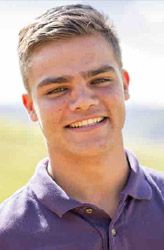
Steve and I had another two children – Charlie, born in 1999, and Fredrick (Freddie), born in 2001. All the children were very happy and healthy until May 2002. Just after Charlie’s 3rd birthday, he asked me to fill a drink bottle with water one night as he was going to bed. First thing the next morning, he asked for it to be filled again. As we had tested the children on Steven’s blood glucose meter every now and then and they were all fine, I was not really alarmed. However, to be sure I asked him if I could test him on his father’s meter, but he refused (as would many other 3 year olds). Not wanting to cause an upset, I decided I would test him that night when he was asleep. When I did, his level was an alarming 21mml. I phoned the hospital and they asked for him to be taken in immediately and by next morning he was started on insulin injections. Lucky for us we had enough knowledge about diabetes to be able to recognise the early signs before Charlie become very ill.
Charlie accepted his daily routine of seven finger prick tests and up to five insulin injections (plus everything that goes with having diabetes) very well. We put this down to the fact that he had always seen his father do the same thing, so it wasn’t as scary as it is for children who have never seen the needles before.
Charlie was diagnosed with Addison’s Disease in 2016, aged 16. This disease, like Type 1 Diabetes, is auto-immune. Addison’s disease means Charlie’s adrenal glands do not produce enough of the stress hormone Cortisol, necessary for the body’s stress response, or Aldosterone, which retains sodium therefore keeping blood pressure in a healthy range. Addison’s Disease is managed with two types of medication, and despite the potential for very serious side effects, has not stopped Charlie from being an active and happy young adult.
A DOUBLE WAMMIE – 2003
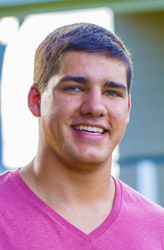
By early January 2003, everything was under control with Charlie’s diabetes. Then we noticed Billy – who was 8½-years-old at the time – was also showing signs. I tested him regularly throughout that day and by afternoon knew that he, too, had developed Type 1 Diabetes. He accepted this very well as he already understood a lot about the disease due to Charlie and their father.
Billy was also diagnosed with Coeliac Disease in May 2003, which means he can’t have any foods that contain gluten e.g. wheat, oats, barley, rye and malt. Coeliac Disease, like Type 1 Diabetes and Addison’s Disease, is also an auto-immune disease.
THE HAT-TRICK – 2004
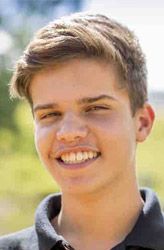
Over the next few months, I began to notice two-year-old Freddie (our youngest child) having mood changes so tested him every now and then. Then in October, 2003, Freddie started showing very early but definite signs of diabetes. This was a particularly difficult time, as Freddie was still producing insulin but it was slowly decreasing. I was immensely frustrated – why couldn’t I stop this from happening?
By March, 2004, Freddie also started on insulin injections – just two months before his third birthday. He, too, accepted his fate very well, probably because he was going to be like his dad and two older brothers. Freddie was then diagnosed with Coeliac Disease in November, 2005.
SOMETHING DIFFERENT – 2006
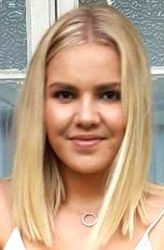
Late in 2005, Sunita – then aged 9½ years – was playing basketball when she collapsed on the court. After a visit to the doctor, he put it down to a “fainting episode”. In February, 2006, Sunita had another “fainting episode” after swimming. We took her to a neurologist who informed us that there was a slight chance it was Epilepsy and, if so, the seizures would become more frequent and stronger. Within two weeks, she had another seizure – this time she didn’t faint but her face jumped and twitched uncontrollably. I phoned the specialist and he suggested we have an MRI to rule out anything else, before starting her on epilepsy medication.
Following the MRI, we went to visit the specialist. Steven, Sunita and I entered his room and within five minutes our whole world came crashing down. We were told that the scans showed a brain tumour. Here we were worried about putting her on epilepsy medication, and now we are being told that our daughter has a brain tumour. Sunita was in the room at the time, so we had to be very mindful about what questions we asked. They couldn’t tell us much more than it was a hematoma or a low-grade glioma, which has a very broad spectrum. The tumour was in the thalamus (core of the brain responsible for all of her gross motor nerves) so we couldn’t do a biopsy. We just had to wait and see if it was growing and how quickly. It was another three months until the next MRI, and as anyone would imagine this was a very emotionally difficult time.
Over the next 18 months, Sunita had four MRIs, which showed no significant changes. She continues to have MRIs at two-year intervals and, fingers crossed, there has never been any change. If this continues to be the case into the future, the doctors say that it’s possible the tumour is just a birth mark where the cells haven’t formed properly. Sunita had two years on the epilepsy medication and 18 months of having no seizures, so she was allowed to go off the medication. She has now been symptom free for over 10 years. Nonetheless, Sunita will have to monitor the tumour for the rest of her life.
NOT ANOTHER ONE – 2009
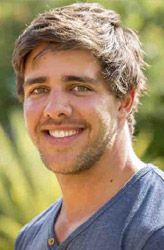
After watching Sam’s blood glucose levels slowly rise over a two-year period, he was formally diagnosed with Type 1 Diabetes in September 2009 – two months before his 17th birthday.
I am so proud of the way Sam has accepted this challenge with such confidence and ease.
THE LAST STRAW / FIVE FROM FIVE – 2019
Sunita had been in a similar situation to Sam for two or so years since age 19, with slowly rising blood glucose levels. To double check her chances, I encouraged her to take a blood test and a Glucose Tolerance Test. While she passed the GTT (just) she showed antibodies in her bloods. So, while it wasn’t easy to process emotionally, it wasn’t much of a surprise when she was diagnosed in April 2019, a month after her 23rd birthday. Like her younger brother Charlie, she had just been diagnosed with Addison’s Disease January of that year.
So that officially makes it 5 from 5!
THINGS HAPPEN FOR A REASON
I am determined not to dwell on why so many health misfortunes have been thrust upon our family and I’m quite sure there are many other people worldwide who have definitely endured far worse. But I whole-heartedly believe things happen for a reason, however difficult it might be to understand and accept. Rather, I would prefer to see it as an opportunity to use the experience I have gained to make a difference to other people who are affected by diabetes.
Starting my own business in 2004, I designed and created funky, bright, useful, convenience-based products to help manage diabetes. With so many diabetics in my family, I have acquired a great deal of knowledge of what is needed to make diabetes as convenient and manageable as possible.
Having spoken at conferences in Australia and overseas, including New Zealand and at the International Diabetes Federation World Diabetes Congress in Montreal, Canada, I hope that by telling my story about the positive way we have dealt with diabetes in our family that I may be able to help other families who are enduring diabetes or another illness. Yes, it is hard and certainly an inconvenience, but if my family can remain positive with the challenges we’ve been handed, then there is no reason why other families can’t do the same!
I am empowered by the thought that I may be able to help others. In fact, I believe this also helps me, as the business has been a great distraction, especially when things have started to play on my mind.
As diabetes – Type 1 and (predominantly) Type 2 – affects a huge population, I hope that I can help spread the word that managing diabetes and being positive can have so many benefits.
This is my motto:
A pessimist sees the difficulty in every opportunity. An optimist sees an opportunity in every difficulty
Take care and always try to enjoy life, whichever direction it may take you.
– Elissa








